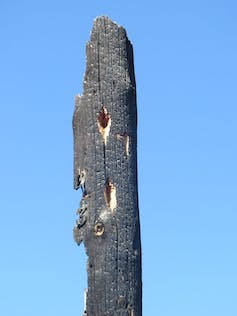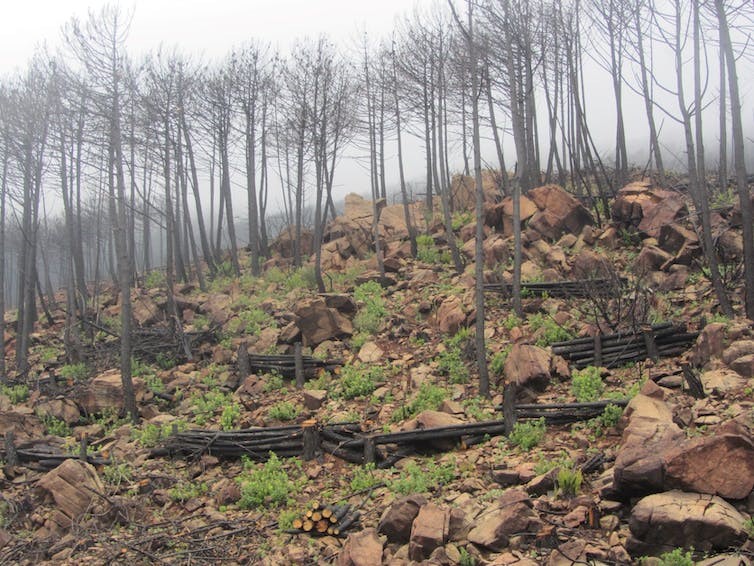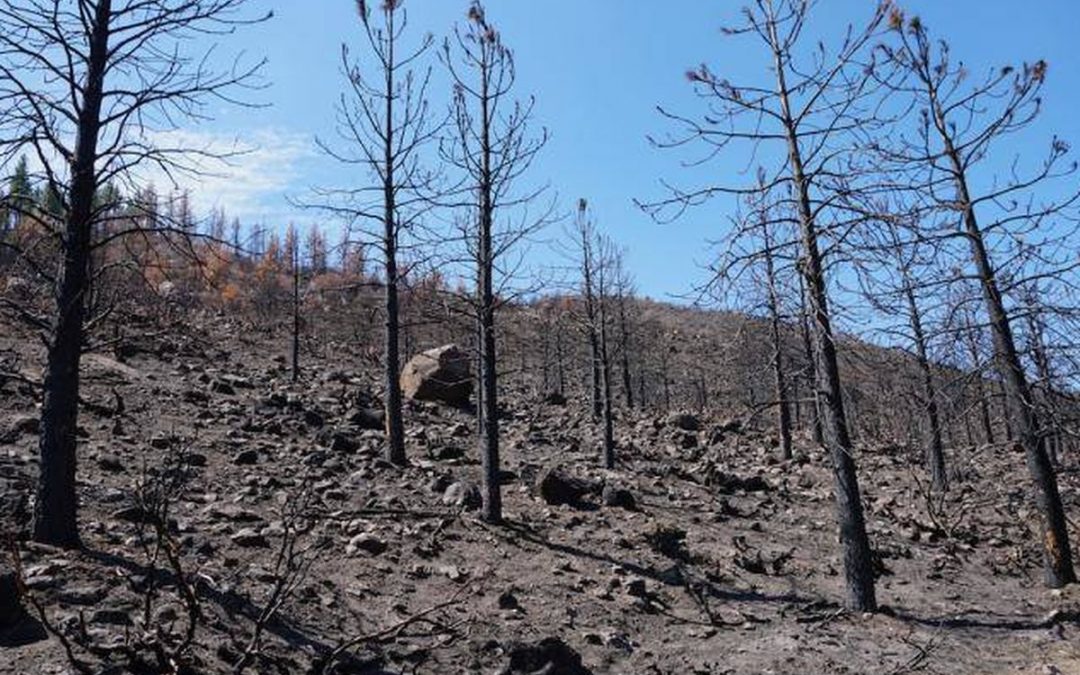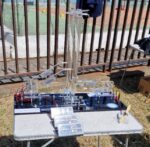Europe has experienced a significant number of large fires this summer. The main reasons for turning ignitions, both anthropogenic and lightning, into large fires have been the high density and continuity of vegetation (a product of rural abandonment and poorly managed large plantations) and long and intense heat waves (a product of our climatic inaction).
After a forest fire, a recurring question is: what is better, to cut down the dead trees or to leave them standing?
One disturbance after another disturbanceObviously, post-fire management will depend on the objective. Productive plantations or forests will not be managed in the same way where the aim is to exploit the timber economically (although burnt timber usually has little economic value), as forests where the aim is to maximise biodiversity conservation and ecosystem regeneration (burnt trees do have ecological value).
From an ecological point of view, cutting the trees and removing the burnt wood constitutes a disturbance after another disturbance (i.e. a compound disturbance) and can have negative consequences for biodiversity and ecosystem regeneration.
Benefits of not cutting down trees
The following are some of the potential ecosystem and biodiversity benefits of leaving dead trees standing in a forest that has recently been damaged by fire.
Clearly, each burned forest is different, and the relative role of each of these benefits may vary from place to place depending on many factors (fire severity, vegetation type, age, density, topographic position, previous history, etc.). But in any event, these potential benefits should be considered before deciding to cut trees:

1.Food source
Dead trees are food and habitat for a great diversity of fungi and insects (xylophagous and saprophytic), which in turn are food for other animals such as birds. They therefore maintain a trophic network that helps the ecosystem to regenerate. It should be remembered that bark beetles (Scolytidae), small beetles that can cause pests in conifers, do not feed on dead trees.
2. Source of organic matter
Dead trees are a source of organic matter and nutrients necessary for the recycling of ecosystems (biogeochemical cycles). Their removal means a loss of fertility for the ecosystem.
3. Nesting place
Dead trees are essential for the reproduction of some species that build their nests in cavities in the trunks. Emblematic examples of the use of trees burnt by fire are different species of woodpeckers.
4. Shelter and seed dispersal
Many forest animals use burned forests, including small vertebrates that find some protection from predation by raptors.
Some vertebrates directly assist vegetation regeneration. For example, many fruit-eating birds defecate seeds while roosting on burnt trees (perching effect), thus contributing to seed dispersal and regeneration of the burnt area.
Another example can be found in jays, which use burnt forests (and not scrub or cut forests) to hide acorns. This is why they are key to the growth of Quercus (holm oaks, oaks and cork oaks). As these species are resprouters, they increase the resilience of ecosystems.
5. Protection against erosion
Burnt treetops reduce the impact of raindrops on the soil and thus reduce the potential for post-fire erosion.
6. Moisture retention
Burned forests can retain fogs and thus maintain higher humidity in the ecosystem, contributing to better regeneration.
7. Resprouting
Regarding tree species with the ability to resprout, keeping them standing allows for the possibility of crown or trunk resprouting (epicormic resprouting) in some individuals and some species. This allows for a much faster regeneration of the forest.
8. Reduction of human intervention
Maintaining a burnt forest prevents the entry of heavy machinery and the dragging of logs. These actions can have a negative effect on the soil and incipient regeneration, and can even lead to gully initiations. Maintaining a burnt forest also reduces economic expenditure.
On the whole, leaving trees standing in a burned forest maintains a semi-forest environment beneficial for regeneration and the proper functioning of the forest ecosystem. Conversely, the felling of dead trees benefits scrub species and open ecosystems.
Intermediate alternatives
A solution that has often been proposed is to cut the trees and remove the wood, but leave a percentage of trees standing. This solution allows some dead wood to remain, which may benefit some insects and the recycling of a certain amount of organic matter and nutrients (typically a low percentage). But as a low density of trees is usually left standing, they will be more at risk of being blown down by the first windstorm or snowfall.
Another solution is to cut but not remove the wood (or at least leave branches and twigs), so that some benefits (such as leaving organic matter and nutrients available, and reducing erosion) are kept intact.
For both alternatives, the semi-forest environment of a burned forest is normally lost, and therefore many of the other benefits mentioned above are also forfeited.
¿Can they make new fires easier?
Sometimes the reason why dead trees are felled and removed is to reduce the dry biomass that could act as fuel in a second fire. But this increase in the probability of a second fire is often uncertain, especially because right after the fire there is not enough fine biomass for another fire. And after a few years, often the scrub or young forest is already highly flammable, so the relative contribution of dead trees may be unimportant.
One solution is to cut and remove a percentage of the dead trees at least a year or more after the fire. This would focus on areas where regeneration is already guaranteed. This can reduce the negative impact of felling.
Burnt trees to retain soil
In a wildfire you can often observe specific areas where the probability of soil loss will be high (e.g. due to high slopes, sandy soil, very poor pre-fire vegetation, etc.). As soil loss is the worst thing that can happen after a fire (soil takes a very long time to regenerate), urgent action is required in these areas to prevent soil loss.
Cutting down burnt trees and using them to retain the soil seems reasonable in these cases. Branches and trunks can be used as fences, log dams or to make small containment dikes. However, it is important to avoid generalising these actions to the whole burned area if it is not really necessary. For example, it does not make sense to carry them out in areas with little slope, in very stony soils, in areas with well-preserved terraces, or in areas with abundant resprouting plants.

Assessing the consequences before acting
We live in an environment where vegetation is flammable and the climate makes the landscape increasingly prone to fires due to human action.
To improve our coexistence with fire, it is important to enhance post-fire management as much as possible. Decision-makers must balance socio-economic and ecological criteria before any action is taken. Whatever the decision, it would be desirable to assess the possible impact of the type of intervention selected and, if necessary, to rectify it as far as possible.
Source: The Conversation
Juli G. Pausas
Researcher, Consejo Superior de Investigaciones Científicas (CSIC)












